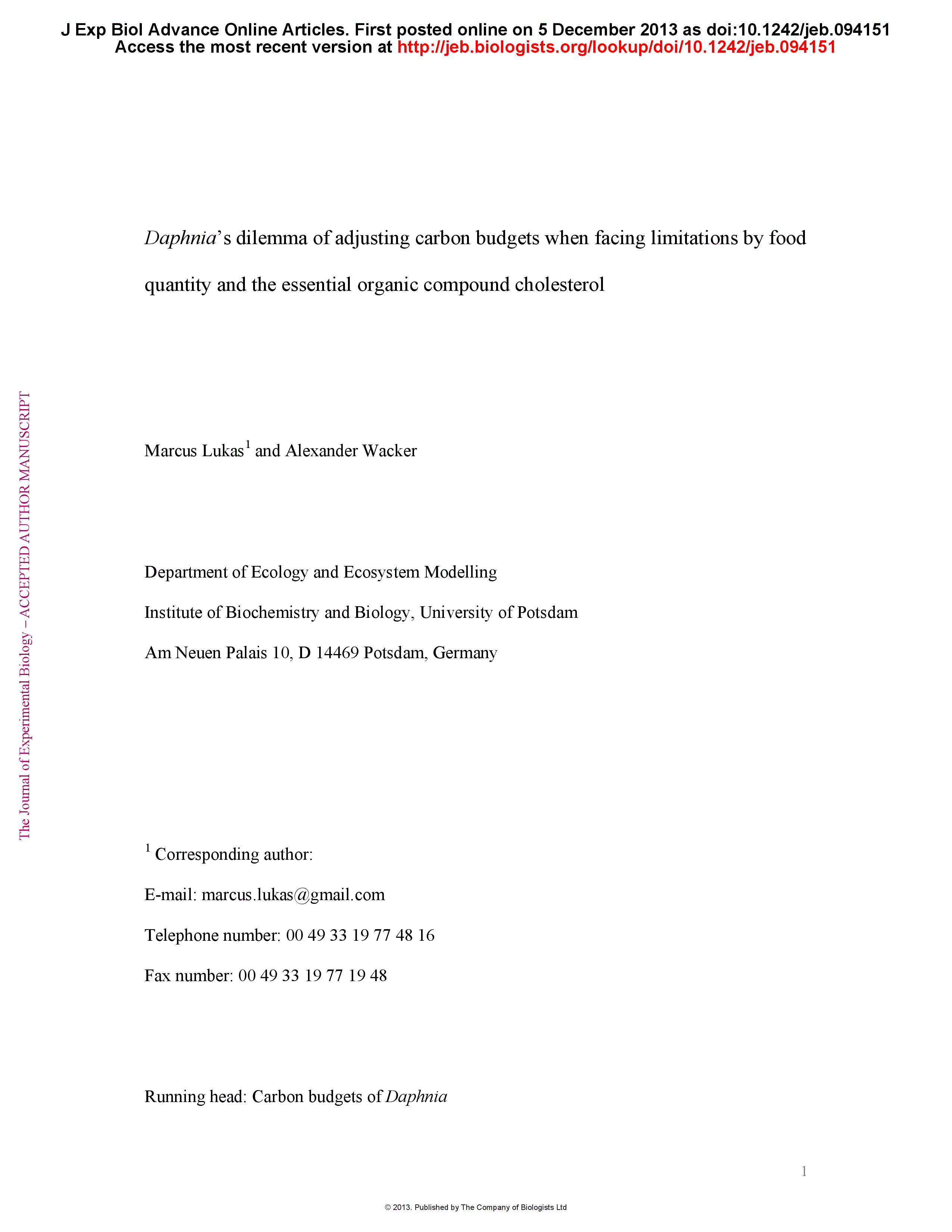Summary
We studied the carbon metabolism in Daphnia when the amount of carbon (food quantity) and/or the content of biochemical nutrients (food quality) are limiting. Growth performances and carbon (C) budgets of Daphnia magna (assimilation, faeces egestion, excretion and respiration measured by [14C]-tracing) were analysed when animals were raised on different food quantities and concentrations of cholesterol, an essential biochemical food compound. Cholesterol is of special interest because it not only acts as limiting nutrient but also contributes to the overall carbon pool of the animals. As the tissue cholesterol concentration in Daphnia is quite low, we hypothesized the selective exclusion of cholesterol from carbon budgeting and tested this by using radiolabelled cholesterol. Somatic growth rates of D. magna were highest at high quantity and quality and were reduced to a moderate value if either the food quantity or the cholesterol concentration was low. Growth was lowest at low food quantity and quality. The measurements of C budgets revealed high regulative response to low food quality at high food quantity only. Here, low dietary cholesterol caused that bulk carbon assimilation efficiency (AE) decreased and that assimilated (excess) carbon was increasingly respired. Additionally, Daphnia enhanced efficient adjustment of C budgets when facing cholesterol limitation by (i) increasing the AE of the cholesterol itself and (ii) not changing cholesterol respiration which was still not detectable. In contrast, at low food quantity Daphnia has the dilemma to be unable to adjust for low food quality emphasizing that food quantity limitation could overrule food quality effects.








